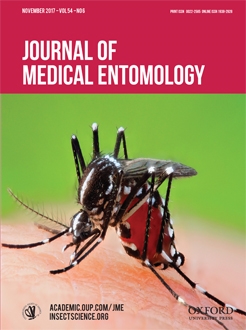The main malaria vectors in sub-Saharan Africa, the Anopheles gambiae (Giles; Diptera: Culicidae), normally breed in clean water sources. However, evidence suggests an on-going adaptation of Anopheline species to polluted breeding habitats in urban settings. This study aimed at understanding the adaptation to breeding in water bodies with different qualities, in five selected mosquito breeding sites in urban Accra, Ghana. The study sites were also evaluated for the WHO water-quality parameters as a measure of pollution, and insecticide residues. Field mosquitoes were evaluated for five genes; CYP6P3, CYP4H19, CYP4H24, GSTD1-4, and ABCC11—associated with insecticide detoxification—using quantitative RT-PCR, as well as Mono-oxygenase, Alpha Esterase, Glutathione S-transferase, and insensitive acetylcholinesterase (AChE) using biochemical enzyme assays. The lab-reared, insecticide susceptible An. gambiae Kisumu strain was bred in the most polluted water source for 10 generations and evaluated for the same genes and enzymes. The results revealed that the fold expression of the genes was higher in the larvae compared with the adults. The results also suggest that detoxification enzymes could be involved in the adaptation of An. gambiae to polluted breeding sites. Correlation analysis revealed a highly positive significant correlation between calcium levels and all five genes (P < 0.05). Stepwise linear regression to understand which of the variables predicted the expression of the genes revealed that sulphate was responsible for ABCC11 and CYP4H24, alkalinity for GSTD1-4, and calcium for CYP4H19 and CYP6P3. The detailed genetic basis of this adaptation need to be further investigated. A further understanding of this adaptation may provide outlooks for controlling malaria and other disease vectors adapted to polluted breeding water sources.
How to translate text using browser tools
6 September 2017
The Role of Detoxification Enzymes in the Adaptation of the Major Malaria Vector Anopheles gambiae (Giles; Diptera: Culicidae) to Polluted Water
Sandra A. King,
Bibian Onayifeke,
Jewelna Akorli,
Isaie Sibomana,
Joseph Chabi,
Theresa Manful-Gwira,
Samuel Dadzie,
Takashi Suzuki,
Michael D. Wilson,
Daniel A. Boakye,
Dziedzom K. de Souza
ACCESS THE FULL ARTICLE
It is not available for individual sale.
This article is only available to subscribers.
It is not available for individual sale.
It is not available for individual sale.

Journal of Medical Entomology
Vol. 54 • No. 6
November 2017
Vol. 54 • No. 6
November 2017
adaptive evolution
Anopheles gambiae
gene expression
Ghana
polluted water




